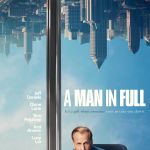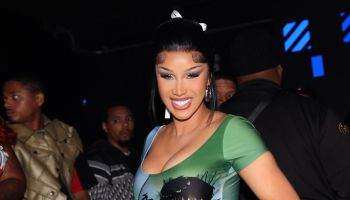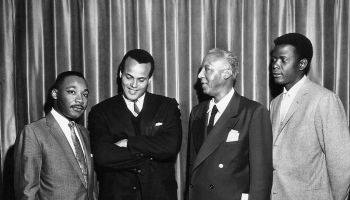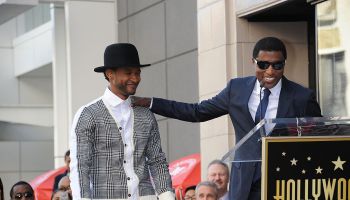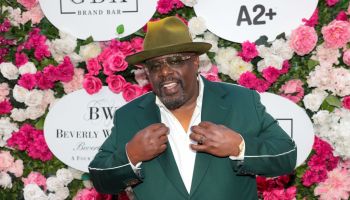Sometimes a lot more goes into the artwork for an album or mixtape. In the case of Sormeh Saei, music, surroundings and her early life contributed so much more than you might think to her promotional artwork for the Watching Over The Throne album that was recently released by O’Neal McNight and DJ Rob Dinero.
A mix of music from the uber popular Jay-Z and Kanye West album Watch the Throne, and acapella raps from 2Pac and the Notorious B.I.G. the record is amazing. But the artwork that went into the Biggie and Tupac portrait work made specifically for the release of the CD was equally as good.
MUSIC: Notorious B.I.G. & 2Pac “Watching Over the Throne Mixtape”
With a background that involves leaving Iran for the U.S., moving to New York and falling in love with hip-hop, it’s no wonder that she Sormeh was chosen to undertake such a task.
We got a chance to chop it up with this painter/photographer to briefly discuss her past, her work, and her undying love for hip-hop in the article below. Check it out!
You started painting at a young age. Were you always an artistic child?
I was born in ’83 in Iran, and at the time after the revolution happened in 1973, their government and regime completely changed. Basically after the regime changed, all basic human rights were completely out the window and you had to live by the rules of the regime or you would be killed, or imprisoned or other consequences that make no sense.
So my parents waited thinking that in a couple of years things would blow over and eventually change, but things kept getting worse.
After my sister was born they realized that things were way out of the people’s control and the only way they could give us a better life and a better future was to escape. So we moved to New York when I was 10. It was ’94 and we moved to a small apartment in the Bronx.
I pretty much grew up in the Bronx for a good 13 years and don’t have much memory of whether I was drawing a lot of pictures or if I was artistically designing. My life was very different when I was younger and art wasn’t really pushed. If you don’t have any basic human rights; how can you express yourself?
It all started when I moved to New York and went to P.S 141, which was the junior high school in the Bronx. Because I didn’t speak English, I started developing a special relationship with art because no language was needed. You just express yourself based on colors, shape and pictures and that’s when I really started discovering this talent that I had.
I remember my seventh grade art teacher Mr. Josenberg ‘till this day and I will not forget him. He was the one that really helped me put together a portfolio and he sort of taught me about myself; about the talent that I had never discovered.
With his help I applied to LaGuardia High School, which is in Lincoln Center, and I got accepted. I was so happy about that because I know it’s very difficult to get into. I had a lot of insecurities applying and that’s when things really started for me.
At age ten when I came to New York, that’s when I realized that’s when I was free. I was able to just be the person that I want to be and not be afraid of it. Not only did my relationship with art start at that age, also it was music and more so specifically hip-hop, because growing up in the Bronx it was a very informed culture. It was the first time I was ever exposed to hip-hop music, because if you can imagine where I came from there wasn’t much access to the outside world because the government doesn’t want you to know what else is going on. Everything is banned, the Internet is filtered and everything is controlled. The first time I heard the sound of hip-hop I was so drawn to it.
My three favorite hip-hop artists of all time, I’m sure it’s everybody else’s also, are Biggie, Nas and Jay-Z. As different of a background (they had) I was compared to them and I really connected with their pain and the struggle. That’s what I think is their universal message and that’s what I think drew me to them. As I learned English, I really paid attention to the lyrics. I had the utmost respect for them, because here they were coming from nothing and they were just writing poetry about their life, about their struggles, about the pain that they feel everyday.
How did you get involved in the Watching Over The Throne project?
Fast forwarding to present time when my friend O’Neil had a mixtape, he did a redo of Watch The Throne, the second he told me I was like, yes. I will paint a hundred portraits of Biggie and Tupac because this is something I always adored and loved since I was younger. (I put on their records) I lost myself in my apartment for five days and that’s all I listened to. I finished both paintings and it was the most amazing feeling, because it was my first time ever painting a portrait of Biggie. It was a very emotional moment for me because while I was listening to the music it brought back memories from taking the 109 from the Bronx to the city and listening to their music on the train and arguing with your friends; who knows them better because who analyzed their lyrics more deeply. It just brought back so many childhood memories. I felt very complete because it was almost like I was looking back at all the accomplishments I had. Not only making it in this new country, but I’ve taken myself here from nothing, so it really was a good experience. I really enjoyed doing those two paintings.
Do you find yourself doing photography more now or do you paint more often?
To be honest I still have my insecurities when it comes to photography. I still don’t feel 100 percent comfortable calling myself a photographer because I’m still very new to this. I started photography two years ago and I’ve been painting since I was 10 years old. That’s more my comfort zone, that’s where my strength is. Photography is something I discovered as my escape from painting because it can get very stressful. With painting, there’s no edit and there is no undo. Once it goes onto a canvas it’s permanent and it’s not as easy as quickly taking pictures, editing it, re-doing it, so whenever I find myself being overwhelmed with painting that’s what I escape to. I escape to photography because this way I’m still producing art, I’m still keeping active and making moves without forcing myself if I’m emotionally exhausted. I feel like when you force yourself, it shows in your artwork.
I’m working on a big project right now; speaking of music, I’m dedicating my next show to music. I’m painting 20 portraits of my favorite artists who have influenced my artwork and kept me company for hours and hours in connect a canvas. After I’m done with this project I really want to take a photography class and I really want to learn it by film. I know today digital is the most popular form of photography, but for me, I like things that are old school. I guess that’s the best way to describe it. I would love to learn film and start shooting film and add my skills towards that direction in terms of photography. These are just future plans, for now I’m shooting digital.
How often would you say that you paint?
It varies depending on my mood. If I’m in a good mood or if something really inspired me and I’m just motivated, then I’ll lock myself in my apartment for five days and I’ll just finish two or three paintings.
Sometimes it’ll take me a whole week to finish one painting. The more motivated or I guess, intensive emotion I have, because sometimes I’m really happy and it brings the same effect and sometimes I’m really down and that also brings the same effect. So I guess the more intense emotional state I am in, that’s when the artwork is created. It fuels me.
After looking at some of the artwork on your website, I noticed that women were a very dominant focal point in a lot of your paintings. Would you say that it’s a way to empower women through positive imagery?
I’ve heard that from other people and I never really noticed that I was doing that until it was mentioned to me. I guess it just came natural to me. Maybe there is subconscious meaning behind it growing up in my culture, the Persian culture, where women currently in my country are considered second-class citizens and they don’t have equal rights as men do in so many aspects of society. I guess that’s where some of that comes through.
That’s the best way I can explain it. But with that said I wanted to challenge myself, I decided when I paint these 20 portraits of artists; I’m only going to paint males for my next show.
Do you think your Iranian culture influenced your art influence more than New York or vice versa?
Both equally. There’s a very special place when it comes to my culture. The first stage of my painting when I started I really connected with my childhood and where I came from and everything that my parents sacrificed for me and my sister.
I thought a lot about that so a lot of my earlier work was influenced by Persian poetry and Persian lyrics that I grew up listening to.
I’m trying to put that aside and show the American side because it’s a pretty big part of me. I think in English and that tells a lot.
Do you have a definitive date for your next showing?
I hoping for end of summer. As I get closer to finishing my last piece that’s when I’ll really start looking around for a space and then work on the final details. New York can be a really mean place sometimes and I didn’t want to let finding a space and having people help you put a show distract my art work. So I figured get the work done and then worry about the rest.
For more information and pictures from Sormeh’s collection of artwork, you can check out:
Facebook: facebook.com/sormehsaei
Twitter: twitter.com/@SoBayBay
Website: sormehsaei.com



